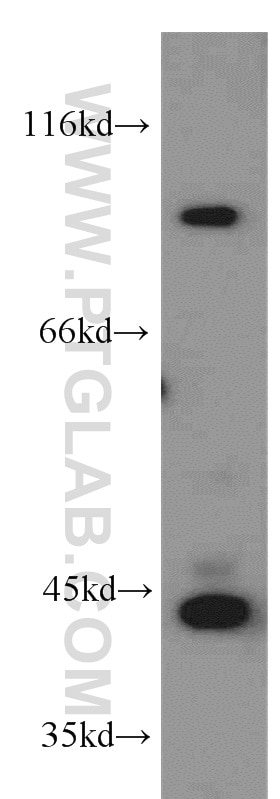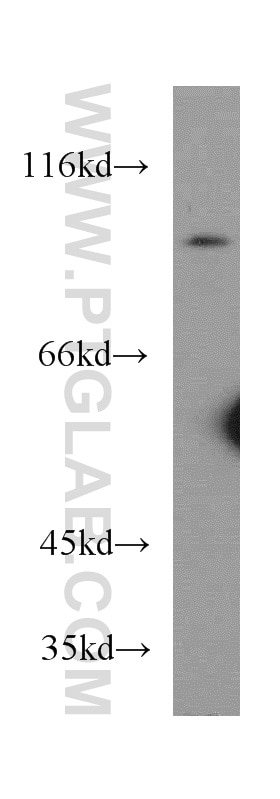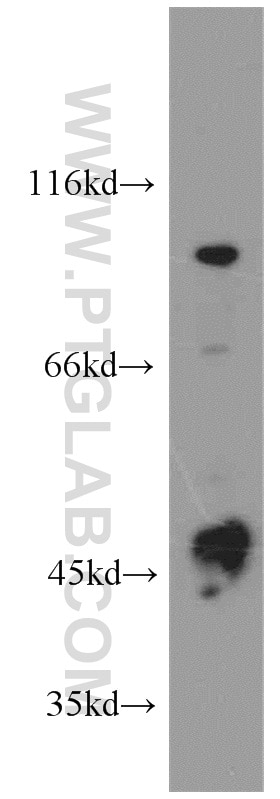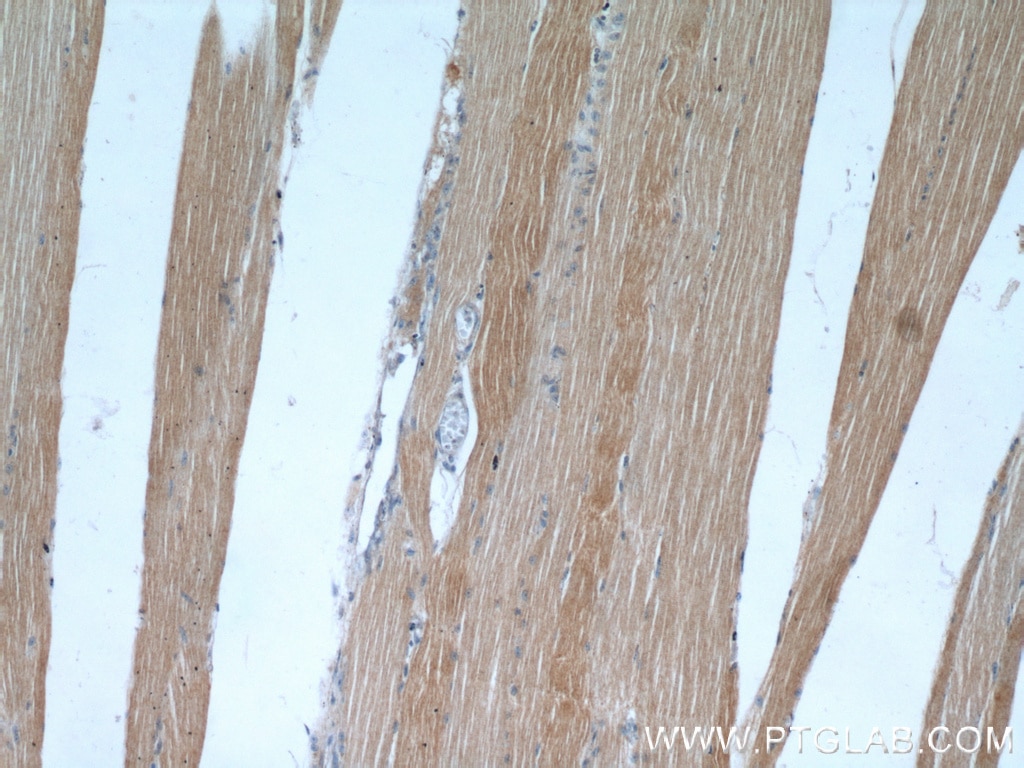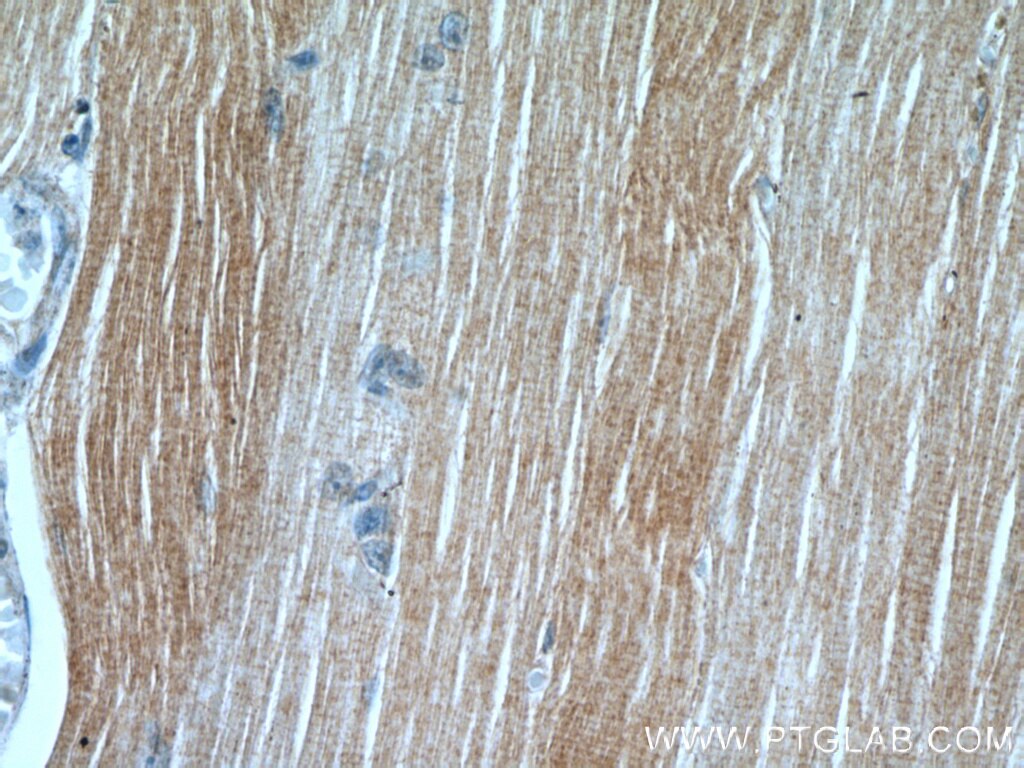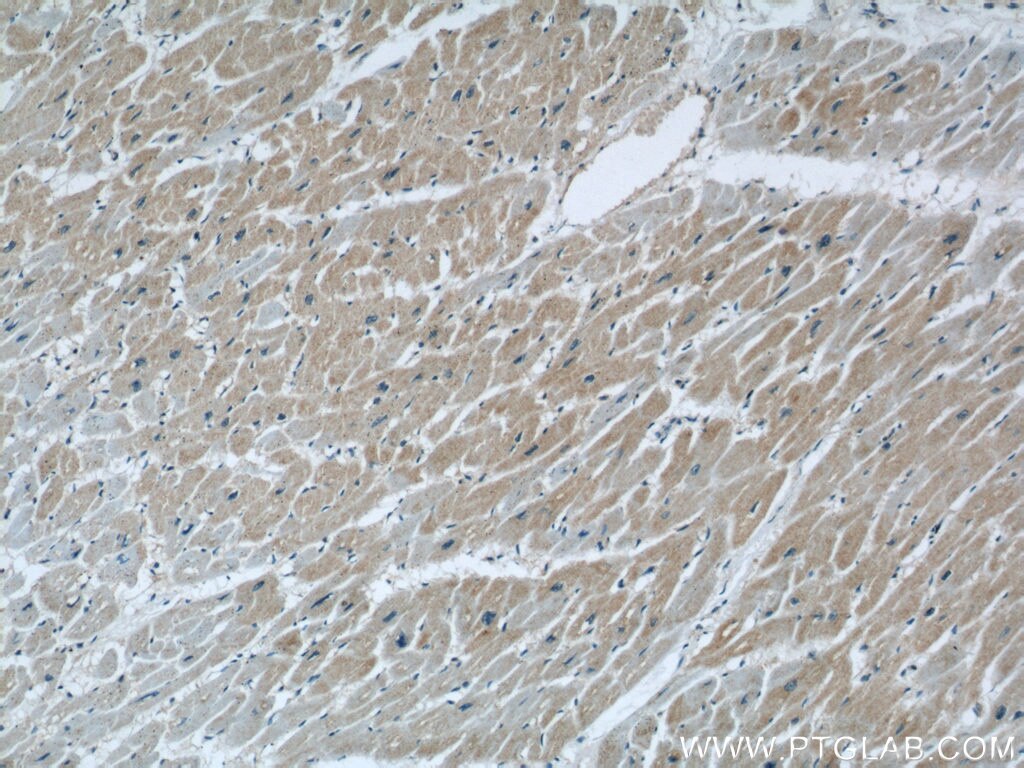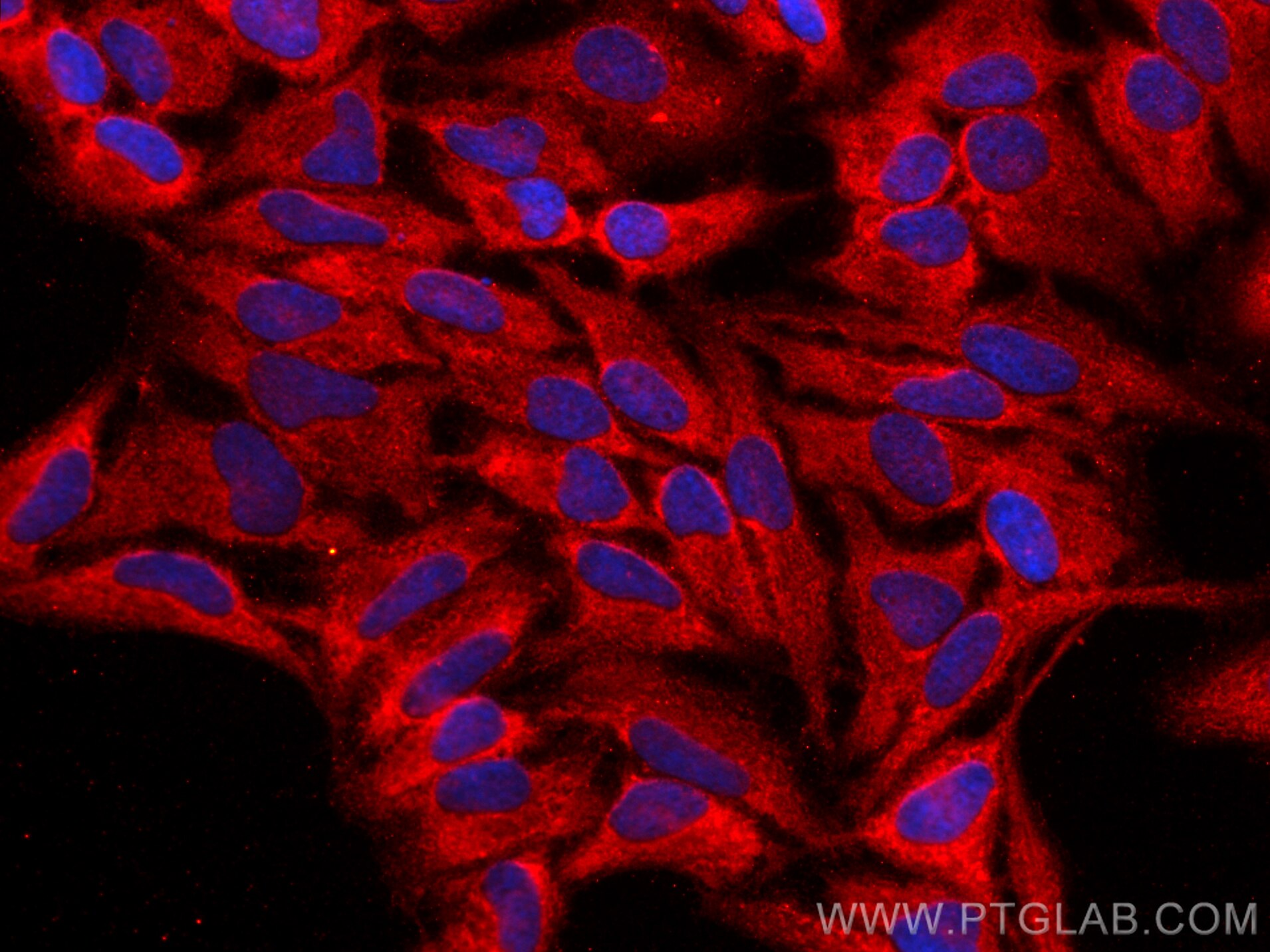- Phare
- Validé par KD/KO
Anticorps Polyclonal de lapin anti-PLA2G4E
PLA2G4E Polyclonal Antibody for WB, IHC, IF/ICC, ELISA
Hôte / Isotype
Lapin / IgG
Réactivité testée
Humain, rat, souris
Applications
WB, IHC, IF/ICC, ELISA
Conjugaison
Non conjugué
N° de cat : 18088-1-AP
Synonymes
Galerie de données de validation
Applications testées
| Résultats positifs en WB | cellules K-562, cellules NIH/3T3, cellules SH-SY5Y, cellules SW-1990, tissu de thymus de souris |
| Résultats positifs en IHC | tissu de muscle squelettique humain, tissu cardiaque humain il est suggéré de démasquer l'antigène avec un tampon de TE buffer pH 9.0; (*) À défaut, 'le démasquage de l'antigène peut être 'effectué avec un tampon citrate pH 6,0. |
| Résultats positifs en IF/ICC | cellules HeLa, |
Dilution recommandée
| Application | Dilution |
|---|---|
| Western Blot (WB) | WB : 1:800-1:3000 |
| Immunohistochimie (IHC) | IHC : 1:50-1:200 |
| Immunofluorescence (IF)/ICC | IF/ICC : 1:200-1:800 |
| It is recommended that this reagent should be titrated in each testing system to obtain optimal results. | |
| Sample-dependent, check data in validation data gallery | |
Applications publiées
| KD/KO | See 2 publications below |
| WB | See 6 publications below |
| IHC | See 1 publications below |
| IF | See 1 publications below |
Informations sur le produit
18088-1-AP cible PLA2G4E dans les applications de WB, IHC, IF/ICC, ELISA et montre une réactivité avec des échantillons Humain, rat, souris
| Réactivité | Humain, rat, souris |
| Réactivité citée | Humain, souris |
| Hôte / Isotype | Lapin / IgG |
| Clonalité | Polyclonal |
| Type | Anticorps |
| Immunogène | PLA2G4E Protéine recombinante Ag12808 |
| Nom complet | phospholipase A2, group IVE |
| Masse moléculaire calculée | 868 aa, 99 kDa |
| Poids moléculaire observé | 99 kDa, 57 kDa |
| Numéro d’acquisition GenBank | BC101584 |
| Symbole du gène | PLA2G4E |
| Identification du gène (NCBI) | 123745 |
| Conjugaison | Non conjugué |
| Forme | Liquide |
| Méthode de purification | Purification par affinité contre l'antigène |
| Tampon de stockage | PBS with 0.02% sodium azide and 50% glycerol |
| Conditions de stockage | Stocker à -20°C. Stable pendant un an après l'expédition. L'aliquotage n'est pas nécessaire pour le stockage à -20oC Les 20ul contiennent 0,1% de BSA. |
Informations générales
PLA2G4E (Phospholipase A2 group IVE), also known as cPLA2-epsilon. Calcium-dependent N-acyltransferase is involved in the biosynthesis of N-acyl ethanolamines (NAEs) in the brain (PMID:29447909). Transfers the sn-1 fatty acyl chain of phosphatidylcholine (fatty acyl donor) to the amine group of phosphatidylethanolamine (fatty acyl acceptor) to generate N-acyl phosphatidylethanolamine (NAPE). Similarly can use plasmenylethanolamine as a fatty acyl acceptor to form N-acyl plasmenylethanolamine (N-Acyl-PlsEt). Both NAPE and N-Acyl-PlsEt can serve as precursors of bioactive NAEs like N-arachidonoyl phosphatidylethanolamine also called anandamide (PMID:29447909; 30517655).
Protocole
| Product Specific Protocols | |
|---|---|
| WB protocol for PLA2G4E antibody 18088-1-AP | Download protocol |
| IHC protocol for PLA2G4E antibody 18088-1-AP | Download protocol |
| IF protocol for PLA2G4E antibody 18088-1-AP | Download protocol |
| Standard Protocols | |
|---|---|
| Click here to view our Standard Protocols |
Publications
| Species | Application | Title |
|---|---|---|
Autophagy Inhibition of PLA2G4E/cPLA2 promotes survival of random skin flaps by alleviating Lysosomal membrane permeabilization-Induced necroptosis.
| ||
Prog Neurobiol PLA2G4E, a candidate gene for resilience in Alzheimer´s disease and a new target for dementia treatment.
| ||
FASEB J Group IVE cytosolic phospholipase A2 limits psoriatic inflammation by mobilizing the anti-inflammatory lipid N-acylethanolamine. | ||
Front Genet Deletion of the Capn1 Gene Results in Alterations in Signaling Pathways Related to Alzheimer's Disease, Protein Quality Control and Synaptic Plasticity in Mouse Brain. | ||
J Neuroinflammation Elamipretide alleviates pyroptosis in traumatically injured spinal cord by inhibiting cPLA2-induced lysosomal membrane permeabilization | ||
Skin Res Technol Establishment of a Mouse Model for Porokeratosis Due to Mevalonate Diphosphate Decarboxylase Deficiency |
